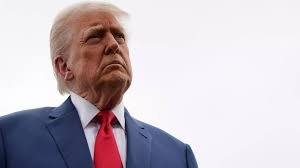
The $2,000 Stimulus Payments Proposal: Can Tariff Revenue Fund Your Next Check?
In a landscape increasingly defined by economic shifts and consumer concerns over inflation, the prospect of direct financial aid always captures public attention. Former President Donald Trump has put forward a bold proposition: distributing $2,000 stimulus payments to middle and lower-income Americans, with the intriguing twist that these payments would be funded by existing tariff revenue.
This proposal, if enacted, could offer significant economic relief to households grappling with rising costs. But what are the details, and how feasible is this grand vision for direct payments?
Decoding Trump’s Tariff Dividend Vision
The core of Trump’s plan revolves around utilizing the substantial revenue generated from import tariffs. Kevin Hassett, a former top economic adviser within the Trump administration, has been a key proponent, suggesting there’s sufficient tariff income to cover the proposed $2,000 checks. “If you look at how much tariff revenue has been coming in, then there would actually be enough room to cover those checks and not go into the rest of the budget,” Hassett stated, lending a notable endorsement to the plan’s financial feasibility.
For many Americans, particularly those experiencing the squeeze of inflation, these proposed payments could offer a much-needed financial cushion. The argument is that while tariffs can sometimes raise consumer prices, a direct dividend could offset some of those costs, acting as a form of consumer aid.
The Roadblocks and Realities: More Than Just Tariffs?
Despite the optimistic outlook from some, the path to implementing these stimulus payments is far from straightforward. Crucially, the plan would require Congressional approval, transforming a theoretical proposal into a legislative reality.
Independent analysts have also voiced skepticism regarding the financial underpinnings. According to data from the U.S. Department of the Treasury, customs duties amounted to $195 billion in fiscal year 2025. While a substantial sum, Erica York, Vice President of Federal Tax Policy at the Tax Foundation, previously indicated that even after excluding high-income earners, the projected cost of the $2,000 dividends could approach $300 billion. This figure significantly surpasses the actual tariff revenue collected, raising questions about the true capacity to fund the proposal solely through tariffs.
Furthermore, the broader legality of the president’s tariff policies themselves is under review by the Supreme Court. A ruling against these tariffs could fundamentally undermine the very revenue stream intended to fund these checks, adding another layer of complexity.
Expert Perspectives: Stimulus or Symbolic Gesture?
The proposal has ignited a lively debate among financial experts:
- Michael Ryan, finance expert and founder of MichaelRyanMoney.com, cautions that “tariffs are essentially a tax Americans pay at the checkout counter.” He suggests that any “dividend” might be partially offset by the higher prices consumers already face due to these tariffs, questioning the net benefit of such government checks.
- Kevin Thompson, CEO of 9i Capital Group, offers a different perspective, stating, “A lot of people are assuming this will look like the pandemic-era stimulus, but I don’t see that as being the case.” Thompson believes that if anything passes, it would likely be more symbolic rather than a substantial, widespread injection of cash akin to previous relief efforts. He emphasizes that such direct cash payments often contradict a broader Republican agenda focused on debt reduction.
Even Treasury Secretary Scott Bessent alluded to the possibility that the “dividend” could manifest in various forms, including tax decreases on tips, overtime, or Social Security, rather than just direct checks. This suggests a potential evolution of the Trump proposal beyond a simple cash handout.
What’s Next for Potential Direct Payments?
As of now, Trump’s proposal remains largely theoretical, with no formal legislative steps taken to advance it. While discussions continue within economic advisory circles to “get the numbers straight,” the ultimate decision and path forward hinge on potential future administrations and the willingness of Congress to legislate such a measure.
The promise of $2,000 stimulus payments is undoubtedly appealing, especially with continued economic pressures. However, the intertwined challenges of securing adequate funding, navigating legislative hurdles, and addressing the underlying economic impact of tariffs mean that this economic policy proposal faces a complex journey from concept to reality.




